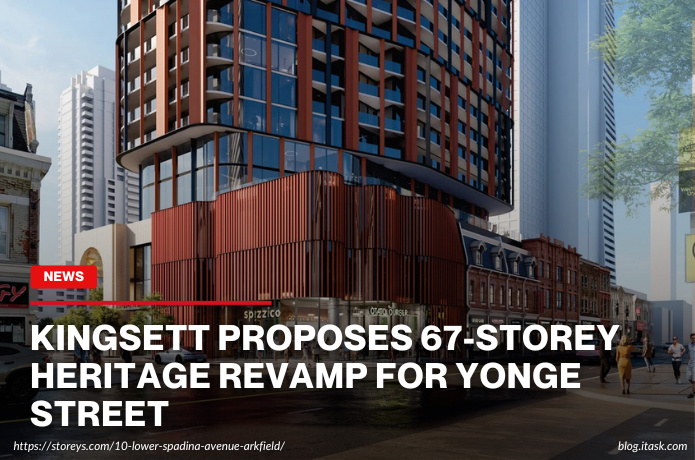KingSett Proposes 67-Storey Heritage Revamp For Yonge Street
KingSett Proposes 67-Storey Heritage Revamp For Yonge Street

KingSett Capital has unveiled an ambitious proposal to transform a historic corner of downtown Toronto with a towering 67-storey mixed-use development. The project, which focuses on the southeast corner of Yonge and Richmond Streets, aims to blend modern architecture with the preservation of the site’s heritage elements. KingSett’s plan highlights their commitment to enhancing urban spaces while respecting the city’s architectural history.
The proposed development would replace several existing properties, including a three-storey heritage building at 20 Richmond Street East, originally constructed in 1913. Instead of demolishing the structure, KingSett intends to carefully integrate its façade into the base of the new tower. This approach reflects a growing trend in Toronto, where developers seek to preserve historical elements while accommodating the city’s rising demand for housing and commercial spaces.
If approved, the tower would feature a mix of residential, retail, and office spaces. The residential component is set to include 593 condominium units, ranging from one to three bedrooms. At ground level, retail spaces would maintain the vibrant pedestrian experience along Yonge Street, while the office spaces above the podium level would cater to Toronto’s bustling business community.
One standout aspect of the proposal is its design, led by the renowned architectural firm BDP Quadrangle. The tower would have a sleek, contemporary look, contrasting with the preserved heritage façade at its base. This combination of old and new is intended to create a unique visual identity for the site, contributing to the evolving skyline of Toronto while celebrating its history.
The project still faces several steps in the approval process, including reviews by the city’s planning department and heritage preservation experts. Community feedback will also play a crucial role in shaping the final design. As with many developments in downtown Toronto, there may be concerns about density, traffic, and the impact on nearby properties. KingSett has expressed a willingness to work with stakeholders to address these issues.
If the project moves forward, it could become a shining example of how Toronto can balance growth with heritage preservation. As the city continues to evolve, developments like this one demonstrate how innovative design can honor the past while building for the future.
